How to Prune the Tricky Shrubs
Even seasoned gardeners scratch their heads when it comes to cutting back these difficult shrubs
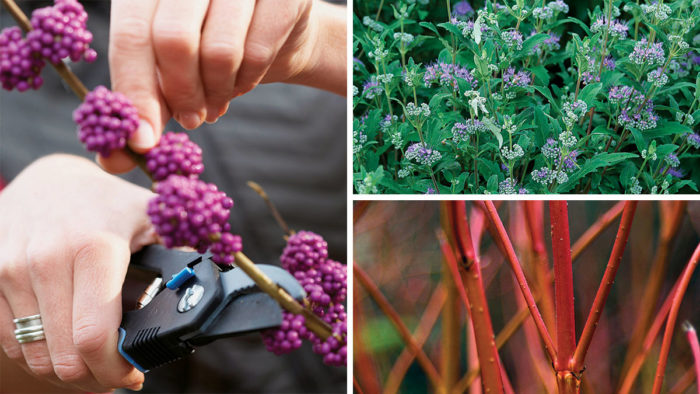
Call them the “unprunables”: common shrubs that cause even the most seasoned gardeners to freeze (or rip their hair out) when it comes to cutting them back. You know the offenders: forsythia, elderberry, and beautybush, just to name a few. It seems that no one knows exactly how to prune this rogue group, but, if left alone, these plants look gangly and unkempt. We’ve all read the gardening books that offer the same prescription for almost every type of shrub, pruning advice that is so old that I believe it may have been supplied by Archimedes to early philosopher-gardeners of the Symposium. But there are a great many plants for which the old standards—remove dead, diseased, and damaged branches; eliminate all crossing branches; each year, remove one-third of the old canes at the base of the plant—simply don’t apply.
Some shrubs require a different approach. Can you imagine trying to remove all the crossing branches of a quince without losing your mind? Rather than relegate these otherwise-worthy garden plants to the dustbin of horticultural history, I suggest using one of three alternative pruning methods. Each has its pros and cons, but every one will leave your shrub looking better—and the risk of you going prematurely bald much lower.
Shrubs that are hard to prune
These are primarily fast-growing shrubs with inarguable garden merit but with a penchant for producing branches woven together as tightly as a doormat.
 |
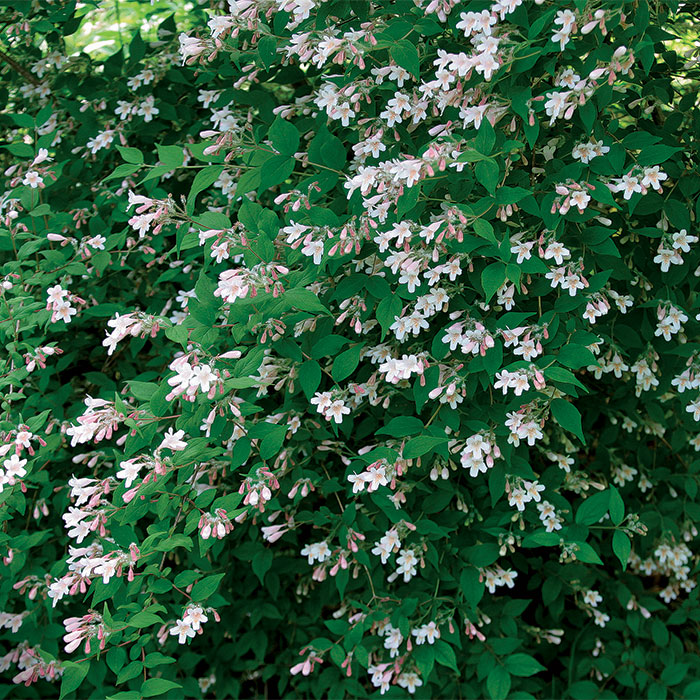 |
 |
- Allspice (Calycanthus spp. and cvs., USDA Hardiness Zones 5–9)
- Beautyberry (Callicarpa spp. and cvs., Zones 5–9)
- Beautybush (Kolkwitzia amabilis and cvs., Zones 5–9)
- Blue-mist shrub (Caryopteris spp. and cvs., Zones 6–9)
- Deutzia (Deutzia spp. and cvs, Zones 5–8)
- Elderberry (Sambucus spp. and cvs., Zones 3–9)
- Flowering quince (Chaenomeles spp. and cvs., Zones 5–9)
- Forsythia (Forsythia spp. and cvs, Zones 3–9)
- Mock orange (Philadelphus spp. and cvs., Zones 4–9)
- Weigela (Weigela spp. and cvs., Zones 4–9)
- Chaste tree (Vitex spp. and cvs., Zones 6–9)
 |
 |
Pick the pruning method that best suits your style
It seems that not much has changed over the years with how experts teach gardeners and would-be gardeners to prune shrubs. But the unprunables are not easily categorized and, therefore, require a different approach when it comes to trimming them back. And I think the approach taken should be based more on a gardener’s Myers-Briggs personality test than on a certain set of defined, step-by-step rules. Any one of these pruning approaches can produce a healthy, long-lived, and useful plant. The trick is choosing the approach that best fits you as a gardener.
The Busy Banker Buzz Cut
If you happen to be one of those people who spends your daytime hours dreaming up new ways to make your first million (or you have kids or a full-time job), you might not have time to tweak and primp the shrubs in your garden. For this group, I suggest the every-three-year whack because it’s quick and easy. Simply ignore the shrub for three years and then, one day in late winter or early spring (when you have a brief break from doing your best Jacob Marley imitation), run home, fire up the chain saw, and buzz the beast to within 6 inches of the ground. Then stand back and watch your shrub explode with new growth as soon as the weather warms up.
Pros: The plant will rebound quickly, and the following year, it will have a more uniform and compact habit and the bloom set will be better.
Cons: You’ll lose the flowers for one spring on those species that set them on old wood: elderberry, deutzia, mock orange, flowering quince, and forsythia.
The Structured Engineer Shear
This approach celebrates rules and systems—the notion that there is a way a plant should grow and look and that it’s a gardener’s job to ensure that order is maintained. The goal is to have a shrub with evenly spaced branches and balanced branch distribution. You must adopt this method when the plant is young and plan on spending a pruning session in summer and in winter—every year—selecting, envisioning, and clipping all crossing branches. With fast-growing, suckering shrubs, like the unprunables, this takes a Herculean effort but creates a spectacular specimen.
Pros: The considerable upside is that, with these shrubs, there is simply no other way to achieve a beautiful, sculptural focal point plant in the garden.
Cons: It takes time—lots and lots of time.
The Surfer Dude Trim
“Let it be,” wrote John Lennon and Paul McCartney in one of the most lyrically repetitive songs ever to top the charts. Little did they know that those words would set a new direction in horticultural practices. The Surfer Dude Trim is for those who favor a laid-back alternative to the Busy Banker Buzz Cut. This pruning style is best suited to gardeners who like hanging out in the hammock, admiring their garden, rather than obsessively pulling the weeds within it. Here’s how to do it: If you happen to notice a wild branch that seems out of place, give it a snip. Trimming can be done at any time of year and requires little effort. Don’t worry about those pesky crossing branches—just clip a few bits here and there to give the shrub the shape you like.
Pros: Small bits of pruning like this can be done, as they say, “anytime the shears are sharp.” If you are only removing partial branches here and there, you won’t be likely to trigger the plant to force tons of regrowth as you might with aggressive renewal pruning or heavy shearing. This means there is no risk of frost damage if trimming in early spring or in fall.
Cons: Your shrub will never be considered an architectural masterpiece, and it may eventually become so dense that its inner branches will begin to die due to lack of light.
What else can I prune this way?
Several other shrubs can be pruned using these three methods, as long as they fit into one of two categories. The first group of plants is easy to identify. The second type takes some experience.
 |
 |
Plants that have a strong suckering growth habit. These are shrubs that produce multiple shoots from the crown, creating a cluster of stems at their base. Red osier dogwood (Cornus stolonifera and cvs., Zones 3–8) and winterberry (Ilex verticillata and cvs., Zones 5–8) both qualify.
 |
 |
Shrubs that resprout from adventitious buds. These are plants (often evergreens) that are famous for their ability to sprout from the base when cut back hard during the dormant season. This feat is possible because sprouting occurs from below their bark. Common boxwood (Buxus spp. and cvs., Zones 6–9) and many evergreen hollies (Ilex spp. and cvs., Zones 5–9) are two examples.
Paul Cappiello is the executive director of Yew Dell Botanical Gardens in Crestwood, Kentucky.
Photos, except where noted: Michelle Gervais
Illustrations: Judy Simon
Fine Gardening Recommended Products
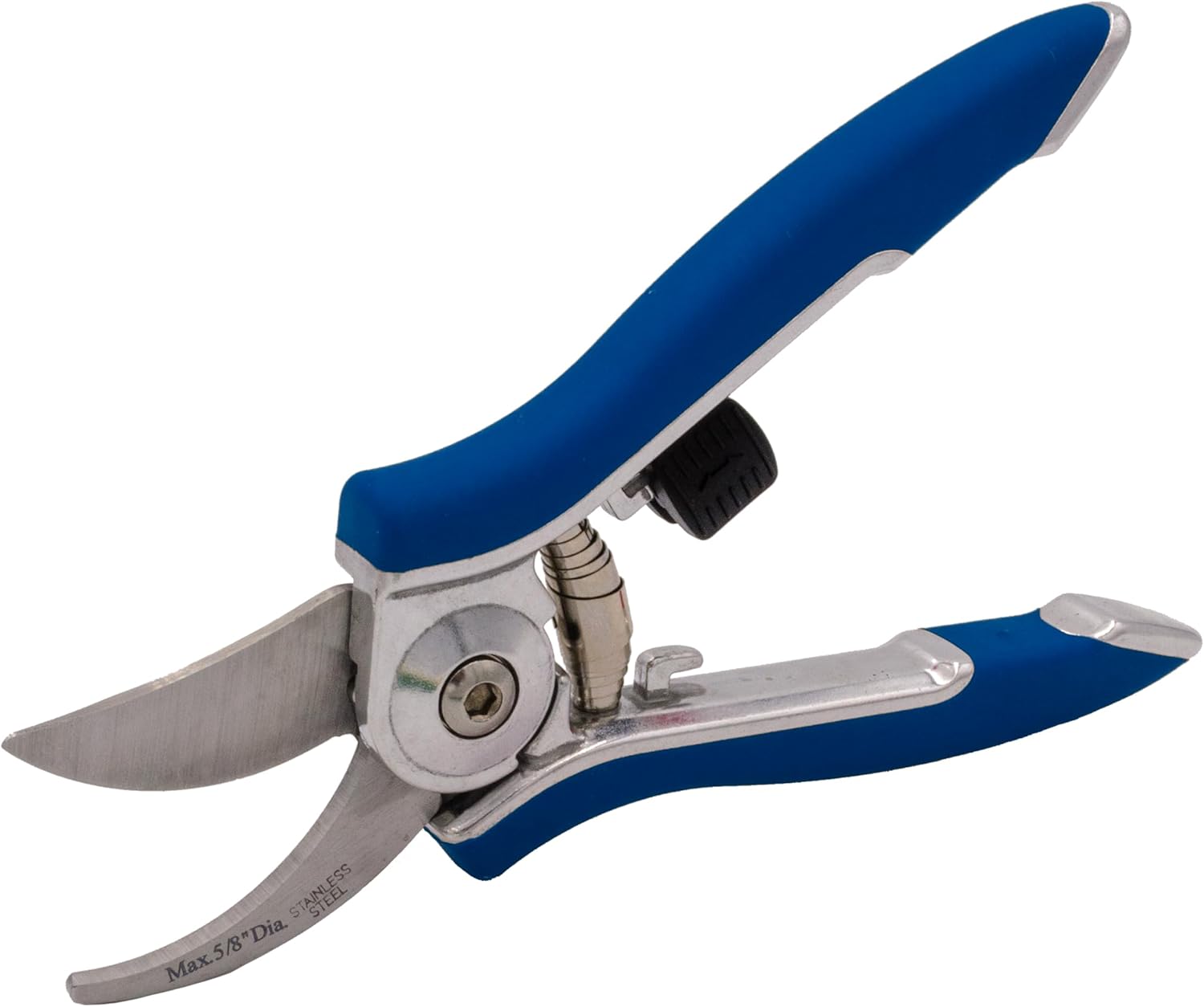
Dramm Bypass Pruner, Cut up to 5/8-inch in diameter, Stainless Steel Blade, Blue
Fine Gardening receives a commission for items purchased through links on this site, including Amazon Associates and other affiliate advertising programs.

Pruning Simplified: A Step-by-Step Guide to 50 Popular Trees and Shrubs
Fine Gardening receives a commission for items purchased through links on this site, including Amazon Associates and other affiliate advertising programs.



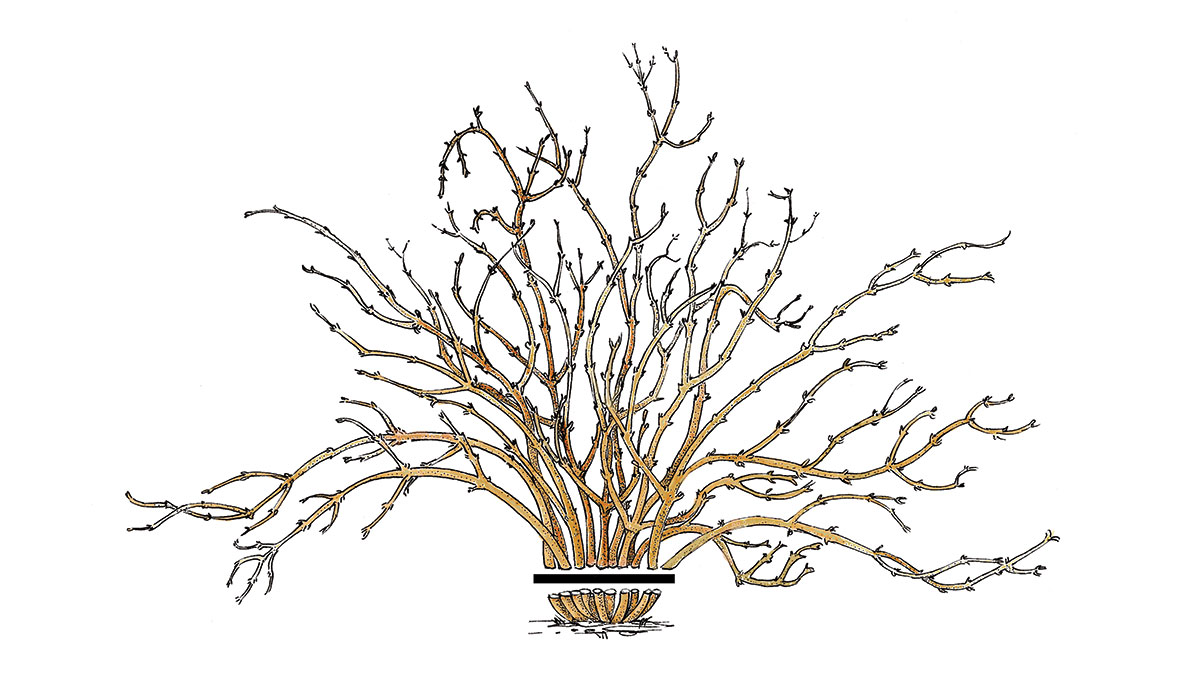

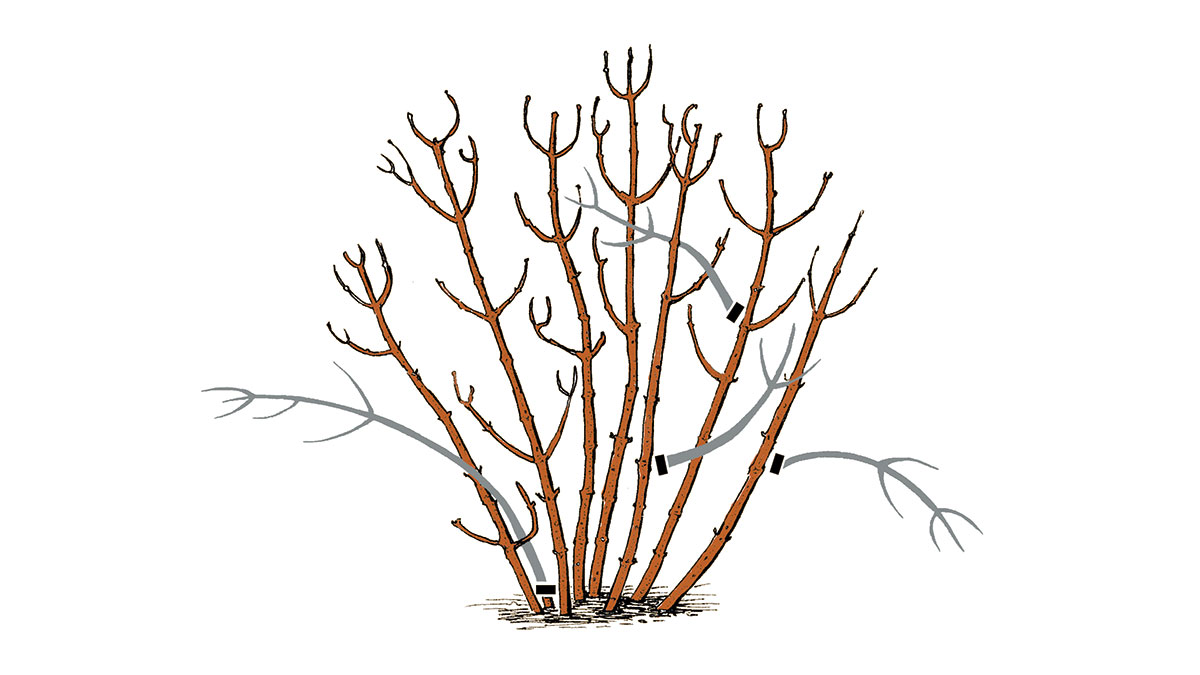





Comments
Log in or create an account to post a comment.
Sign up Log in